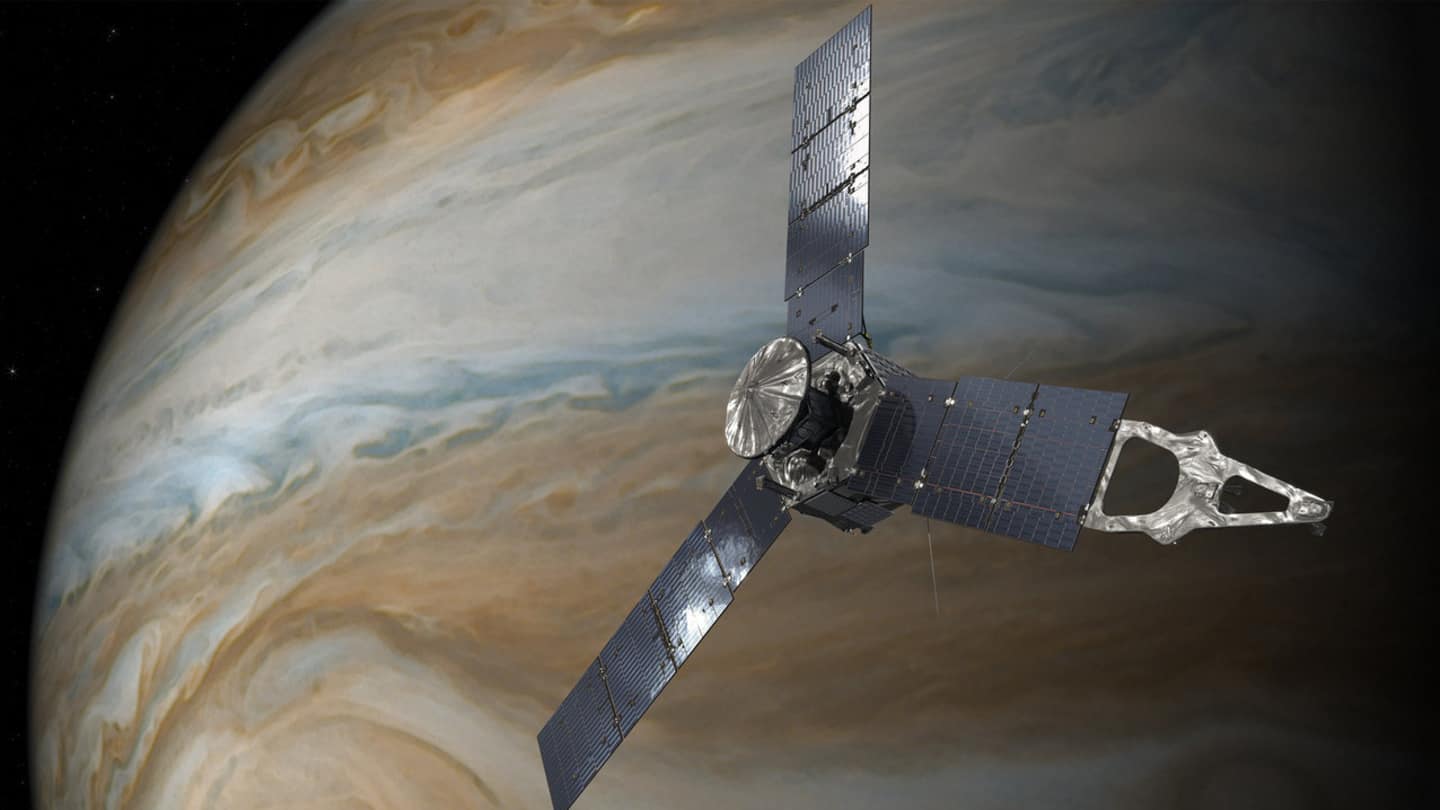
NASA's Juno spacecraft snaps first close-ups of Jupiter's largest moon
What's the story
On June 7, NASA's Juno spacecraft zoomed past Jupiter's largest moon called Ganymede. The spacecraft snapped incredible close-up pictures of the celestial body as it passed by at a distance of 1,038 kilometers from Ganymede, the closest any spacecraft has been to the moon in 20 years. Two pictures released on Tuesday showed Ganymede's craters and long structural features, possibly linked to tectonic faults.
Icy orb
First photograph captured Ganymede's side illuminated by the Sun
NASA said that the sunlit picture released on Tuesday was captured using JunoCam paired with a "green filter," the spacecraft's visible light imager. Once Juno relays home pictures it shot using the Red and Blue filters, NASA said imaging experts will be able to piece together a color portrait of the water-ice-encrusted moon. The pictures have a resolution of approximately one kilometer per pixel.
Dark side
Stellar Reference Unit captured an image of Ganymede's dark side
Additionally, the low-light optimized Stellar Reference Unit camera used by Juno to stay on course provided one black-and-white image of the dark side of Ganymede (the side opposite to the Sun). The image has a resolution of around 600 to 900 meters per pixel. Juno's radiation monitoring lead, Heidi Becker said it will be fun to combine the sunlit and dark side images.
Up, close and personal
First spacecraft in decades to fly so close to Ganymede
The photographs captured by Juno's cameras are significant because this is the first time in 20 years that a spacecraft has been this close to the largest of Jupiter's 79 known moons. Ganymede was discovered by renowned astronomer Galileo Galilei in 1610 along with the planet's three next-biggest moons. Interestingly, Ganymede is also the largest moon known to exist in our solar system.
Mission outline
Juno's latest images expected to yield important scientific, radiation insights
NASA's solar-powered Juno spacecraft was launched a decade ago and has been orbiting Jupiter for five years now. It is built and operated by Lockheed Martin Space in Denver. The spacecraft's encounter with Ganymede is expected to yield insights into its composition, ionosphere, magnetosphere, and ice shell, besides measurements of the radiation environment that will benefit future missions to the planet and its moons.
Quote
NASA's scientific conclusions will take time, more images expected soon
Juno Principal Investigator Scott Bolton said, "We are going to take our time before we draw any scientific conclusions, but until then we can simply marvel at this celestial wonder." Juno will send home more images from its flyby in the coming days.